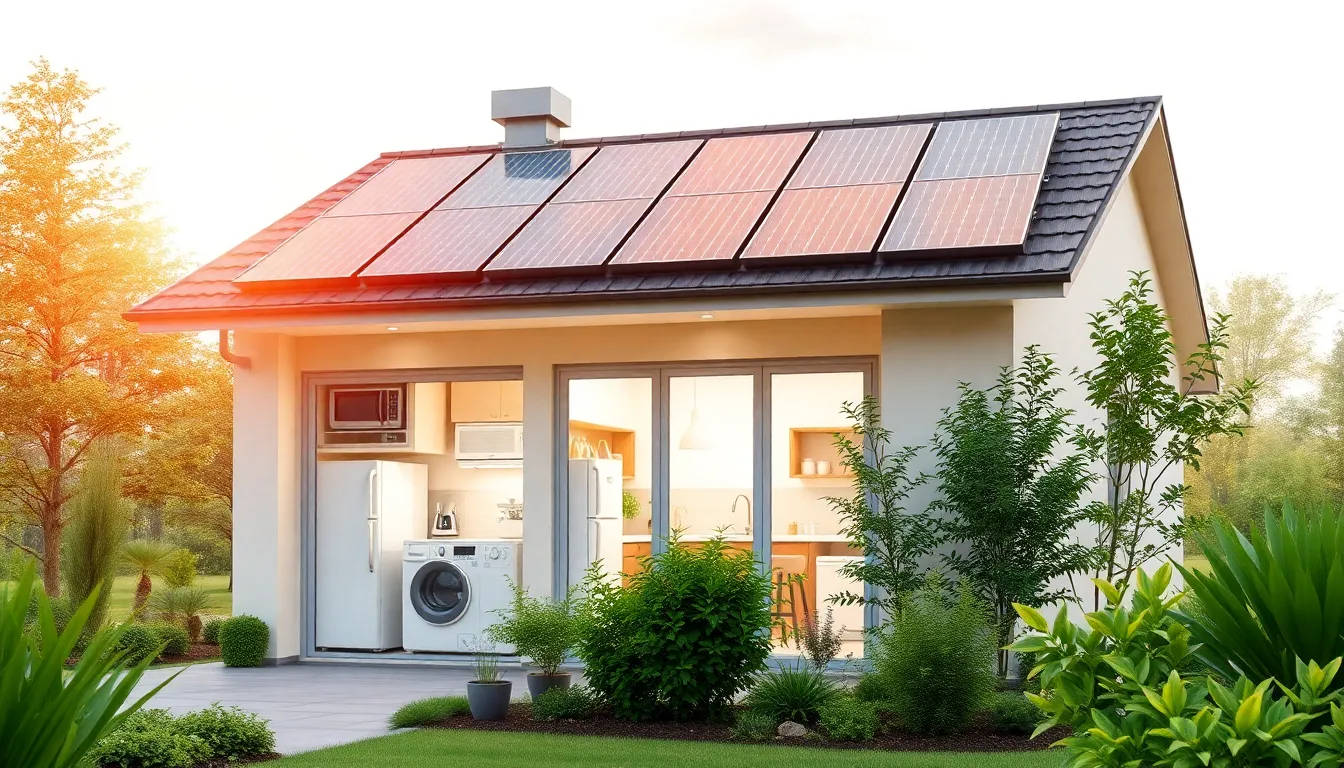Imagine a world where your home not only powers itself but does so while giving Mother Nature a high-five. Welcome to solar smart living, where eco-friendly meets tech-savvy in a delightful dance of energy efficiency. It’s not just about slapping solar panels on the roof and calling it a day; it’s about creating a lifestyle that’s as bright as your future.
Table of Contents
ToggleUnderstanding Solar Smart Living
Solar smart living integrates eco-friendly technologies and practices to maximize energy efficiency. This lifestyle encompasses more than the mere installation of solar panels.
Definition of Solar Smart Living
Solar smart living refers to a holistic approach that combines renewable energy sources with innovative technologies for sustainable living. This concept emphasizes energy conservation through smart home systems, energy-efficient appliances, and sustainable materials. Individuals adopting this lifestyle enhance their homes to reduce environmental impact while saving on energy costs. The goal centers on creating a balanced relationship with nature by employing strategies that lower carbon footprints while ensuring a comfortable living environment.
Benefits of Adopting Solar Smart Living
Adopting solar smart living presents numerous advantages. Firstly, this lifestyle significantly reduces electricity bills, allowing for substantial long-term savings. Secondly, increased reliance on renewable energy sources decreases dependence on fossil fuels, which contribute to climate change. Enhanced home value often accompanies solar installations, increasing market appeal for potential buyers. Additionally, implementing smart technology in homes facilitates energy management and optimization. Overall, the adoption of solar smart living promotes a healthier environment and a sustainable future.
Key Components of Solar Smart Living

Solar smart living encompasses various elements essential for optimizing energy use and sustainability. These components serve as foundational elements for a greener lifestyle.
Solar Energy Solutions
Solar panels represent the first step towards harnessing renewable energy. They transform sunlight into electricity, significantly reducing reliance on traditional power sources. Solar water heaters utilize similar technology to provide hot water, enhancing energy efficiency in homes. Battery storage systems allow homeowners to store excess energy generated during the day, ensuring access during the night or on cloudy days. Inverters convert direct current from solar panels into alternating current for household use, making electricity compatible with home devices.
Smart Home Technology
Smart thermostats automatically adjust home temperatures, optimizing heating and cooling based on occupancy patterns. Energy-efficient appliances use advanced technology to consume less energy while delivering high performance. Smart lighting systems enable homeowners to control lights remotely, promoting energy savings. Additionally, energy management systems provide real-time data on energy consumption, helping users make informed decisions. Integrating these technologies fosters a connected home environment that prioritizes efficiency.
Implementing Solar Smart Living
Implementing solar smart living requires a clear plan and actionable steps that align technology with eco-friendly practices. Individuals can create a sustainable lifestyle that benefits both their finances and the environment.
Steps to Transition to Solar Smart Living
- Evaluate current energy consumption to identify reduction opportunities.
- Research solar energy solutions, considering options like panels and water heaters.
- Invest in energy-efficient appliances that use less power.
- Install smart home technology for optimized energy management.
- Schedule regular maintenance for solar systems to ensure efficiency.
Transitioning means taking deliberate actions in energy conservation and embracing renewable sources. Homeowners can start small by replacing light bulbs with smart LEDs or using a programmable thermostat.
Challenges and Solutions
Limited upfront investment often deters individuals from switching. Financing options like solar loans or tax credits can alleviate this burden.
Integration of smart technologies can feel overwhelming. Tutorials and professional installations simplify the process and enhance user experience.
Homeowners might encounter space constraints for solar installations. Utilizing roof space or exploring ground-mounted options expands possibilities.
Addressing these challenges supports a smoother transition into solar smart living.
Future of Solar Smart Living
The future of solar smart living focuses on advancing technologies and sustainable practices. Innovations are set to transform how energy is generated, stored, and consumed.
Innovations on the Horizon
Technological breakthroughs promise enhanced solar panels, which convert sunlight into energy more efficiently. Companies are developing next-generation batteries that store energy longer and charge faster. Smart appliances will integrate seamlessly with home energy systems, optimizing usage based on real-time data. Further advancements in energy management software will allow homeowners to track consumption patterns and adjust settings accordingly. These innovations collectively promise to elevate solar smart living while reducing overall energy costs.
The Role of Policy and Incentives
Government policies play a pivotal role in encouraging solar adoption. Tax credits, rebates, and grants for solar installations lower the initial costs for homeowners. Many states are implementing net metering policies, allowing users to sell excess energy back to the grid. Moreover, utility companies are increasingly offering green energy programs, incentivizing energy-efficient upgrades. These supportive measures enhance the viability of solar smart living, fostering a more sustainable future.
Embracing solar smart living represents a significant step toward a sustainable future. By integrating renewable energy solutions with smart technology, individuals can create a more efficient and eco-friendly lifestyle. This approach not only reduces energy costs but also minimizes environmental impact, contributing to a healthier planet.
As advancements in solar technology continue to emerge, the potential for enhanced energy management and sustainability grows. With the right investments and a commitment to eco-conscious practices, anyone can transition to a solar smart living model. The journey may have its challenges, but the long-term benefits for both homeowners and the environment make it a worthwhile endeavor.





